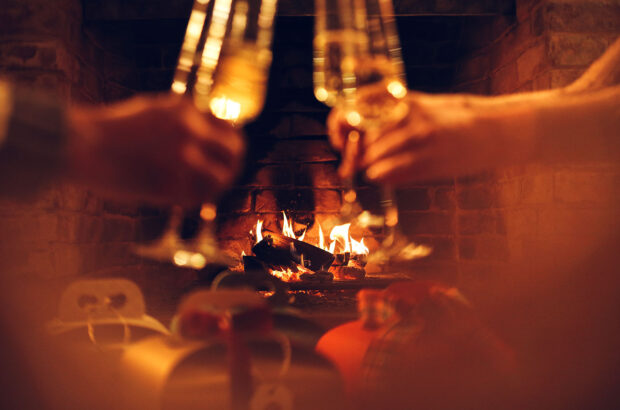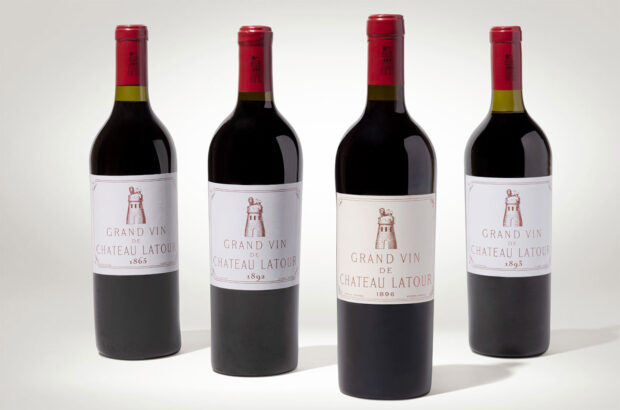Twenty years have passed since the creation of Mirto, the flagship wine of the new team which took over the helm of Bodegas Ramón Bilbao. From the outset, Mirto lined up alongside the vanguard movement which has changed the course of Rioja wine in recent years.
In 1998, with the arrival of the Restoy Zamora family, owners of the famous Licor 43 brand, a new era opened up at Bodegas Ramón Bilbao.
The company began as a growers’ winery, went through a transition period in the 1980s, and by the late ‘90s was making wines with a classical Rioja style. The new owners had the firm intention of changing course and appointed a young team to lead the cellar, with Emilio Restoy as the overall head. Then in April 1999 they brought in Rodolfo Bastida, a Riojan winemaker who came with a solid background acquired during a number of years at one of the region’s most innovative wineries. In the same year, the first Mirto was produced – an advance preview of the new concepts and working philosophy that would be instigated in the wine cellar.
Twenty years on, Bodegas Ramón Bilbao is one of the benchmarks of the new style of Rioja. In addition, the Zamora Company family-owned group makes wines in other Spanish regions, such as Mar de Frades in Rías Baixas and Cruz de Alba in Ribera del Duero, and under the Ramón Bilbao label in Rueda.
A spectacular beginning, built on solid earlier experience and that accumulated along the way, in which the Mirto red wine played an instrumental role in the materialisation of new ideas combining modernity, style and fine quality.
This was the era when Rioja wine was looking to find its way, a new path, where the frenzy for wines with lots of body, high alcohol and an obsession with dark colour and new wood was already a thing of the past, or was in the throes of being overcome. Wine profiles had adapted so closely to those of ‘New World’ wines (or more exactly, to the demands of certain ‘advocates’, or leaders of opinion, from the other side of the Atlantic), that they were far removed from the essence and natural tendency of Rioja Alta reds. Mirto would find its own way of expressing vines located in highly privileged plots, and chart its own course in achieving the goal of modernity and freshness.
The reaction to the excesses of this period in the 1990s resulted in a series of developments: the obsession with colour was abandoned, people looked for the lost finesse and freshness and fought back against the domination of the wood used for ageing, at the same time placing a new emphasis on the concept of terroir.
Rodolfo Bastida and his team at Bodegas Ramón Bilbao adopted all these concepts, which are both classical and innovative at the same time, but they also opted for the careful selection of various special terroirs, in order to put together an exceptional red wine.
Mirto is sourced from vineyards in Rioja Alta, some in Rioja Alavesa, from plots in Ábalos, Labastida, Villalba, Haro, Cihuri, Cuzcurrita del Río Tirón, Briones and San Asensio. Eight controlled sources, always estate-owned vineyards, each one very different from the other.
Vines whose fruit always has the potential to become part of a Mirto blend, but which is not all always used. And the fruit that does not meet the high demands of the bodega’s flagship wine will become the basis for one of the house’s other top labels: Ramón Bilbao Edición Limitada.
These eight base wines follow separate but parallel paths: the grapes are picked by hand and placed in small crates to safeguard the integrity of the fruit and, after the manual selection of the clusters, the grapes are fermented in eight 18,500-litre oak vats. Of these, only two will be used for the Mirto. From there the wine goes directly into French-oak casks to undergo a natural process of malolactic fermentation, remaining on its lees – which are regularly stirred into suspension by the process of bâtonage, with no racking – to continue ageing for around 20 months in new French Allier-oak casks.
The wine is then bottled without any forced clarification or filtering, after which the ageing is completed in the bodega’s underground bottle cellar. The result is a modern wine, of the kind which comes close to squaring the circle by offering at the same time consistency and freshness, with balance, fluidity and noble strength.
A red wine which does not seek to be the expression of a particular vineyard plot, but rather the best expression of a harvest taken from some exceptional vines. A huge success, supported by the critics with rare unanimity: it is ranked among the best in the latest editions of all the Spanish wine guides, with an average score above 95 points out of 100.
Mirto was the first wake-up call for the new philosophy destined to be applied in a classic bodega – innovative concepts that cascaded down to influence the whole range of wines. Not only did this bring the traditional range of Ramón Bilbao crianza, reserva and gran reserva up to date, but it also translated into new concepts such as Ramón Bilbao Viñedos de Altura or Ramón Bilbao Reserva Original – standard-bearers of a bodega on a journey, which has never ceased to improve its facilities and increase the estate’s ownership of vineyards. And its success is reflected in the ratings of the critics and customers alike.

Ramón Bilbao, Mirto, La Rioja 2014
£49.50 Great Western Wine
On the nose it has clean, open aromas such as fresh red-berries, liquorice, and mountain heath. Oak influences such as cumin, tobacco, black pepper, and chocolate. Juicy on the palate with medium acidity, polished tannins and well-integrated alcohol. Long, intense finish revealing ripe red fruit, liquorice and oak. A balanced wine, still evolving and has long ageing potential.







